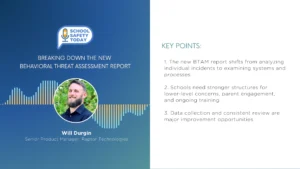Bluedot’s Report Offers Restaurants Insight Into Consumer Spending Behaviors
Inflation and ongoing concerns of a recession are affecting consumer spending behaviors. And as always, the restaurant industry is a great place to take the temperature of what people are willing to spend their discretionary cash on since dining out is definitely not considered a necessity. Despite efforts by the Federal Reserve to ward off continued inflation, the reality is that many compare it to 2008 when the U.S. went through its last recession.
Rising food costs, supply chain issues, and labor shortages continue to plague the restaurant industry. “The price of buying groceries and dining out surged again in August, and are now 13.5% and 8% higher than a year ago, respectively. The overall food index gained 11.4%, the biggest 12–month jump since May 1979 (Forbes).
So, what can restaurants do to maintain profitability? Bluedot’s 7th edition of its State of What Feeds Us study report gives restaurants insight into the latest customer trends to help them address challenges they may be facing.
“They talked to consumers about their restaurant experiences and what’s bringing them to restaurants. What’s keeping them from restaurants? What they’re interested in? and it really unveiled a lot of things that restaurant owners can learn.,” noted industry expert Barbara Castiglia, Executive Editor at Modern Restaurant Management.
Five Takeaways from the “State of What Feeds Us” Report
Bluedot’s data collected from its study goes back three years noting consumer trends within the restaurant industry. The 7th edition surveyed 1,631 Americans (18 and over) to get a pulse on what people are and are not willing to pay for when it comes to dining out during these trying times. Following are the top five takeaways from the study:
1. Coffee Chains are Creating Competition for QSRs
Coffee chains were included in comparison to quick service restaurants (QSRs) for the first time. Sixty percent of respondents noted they would visit a coffee chain drive-thru instead of a QSR if the QSR’s drive-thru lane was too long highlighting the increased competition for customers.
2. 75% of Respondents are Looking for Deals
The use of special offers is on the rise with respondents noting which methods they used to find discounts (51% restaurant apps, 43% coupons, 30% menu board, 29% social media, 27% email, 26% restaurant website). Of notable significance is the discovery that 44% of Gen Z (anyone born between 1997-2012) are finding deals on social media.
3. Nearly 7 Out of 10 Consumers are Using Apps & Loyalty Programs
Driven by the desire to find deals and earn free stuff, consumers are downloading apps with high-income earners preferring apps to any other method of locating discounts. Coupons for dinner are the most popular with a 53% response. Lunch comes next and is the most popular with Gen Z at 36%. Breakfast and snacks pulled in a mere 11%.
4. Mobile Orders are Declining
The mobile order pick-up process is frustrating many consumers dealing with long wait times upon arrival to pick up orders – whether they are prepared or not. A third of survey participants stated they did not want to wait more than four minutes. Other annoyances include preoccupied staff, inaccurate orders, and cold food.
5. Support for Sustainable Restaurants Continues to Be Popular
75% of consumers are more likely to visit environmentally friendly restaurants and restaurants that offer clean ingredients; however, only 1 in 3 is willing to pay for it. Additionally, 86% understand what having a plant-based menu means and 30% have ordered from one.
A Multifaceted Approach to Maximize Current Trends Can Boost Sales
So, what insights do these trends offer restaurant owners? “Obviously planning something that provides value, maybe putting together some kind of menu items that you can use that term value that will grab people’s attention. Offering discounts if possible. If there are some ways that you can find to discount something that people will feel that they’re getting that value, you will build that connection with them,” said Castiglia.
Building value has become increasingly important as the study notes that 91% of consumers have noticed price increases. And, at the same time, 77% of respondents said they were paying the same price for smaller portion sizes. Couple this with 83% of survey participants cutting back on restaurant visits, restaurant owners simply cannot afford to ignore the trends if they want to stay alive.
Conservation and menu adjustments can help keep costs down for restaurants. Consistent portion sizes and cooking only what is needed is another way to reduce waste. Also, “taking a deep dive into the ingredients used for menu items will be key in order to determine profit margins. Identify the best and worst performing items and review costs/time to prepare meals” (Restaurant Technology News). With this information, restaurants can streamline menus and focus on the most popular items with the greatest profit margin.
In the same article, the use of technology to streamline operations and create multiple touchpoints with customers is mentioned. Loyalty programs are another avenue for restaurants to connect with and reward customers for patronizing their establishment. “Obviously, if people are looking to download apps and loyalty programs because they’re going to find deals and freebies, this is a time to invest in those and to create that environment and have them available to meet your guests,” Castiglia said.









